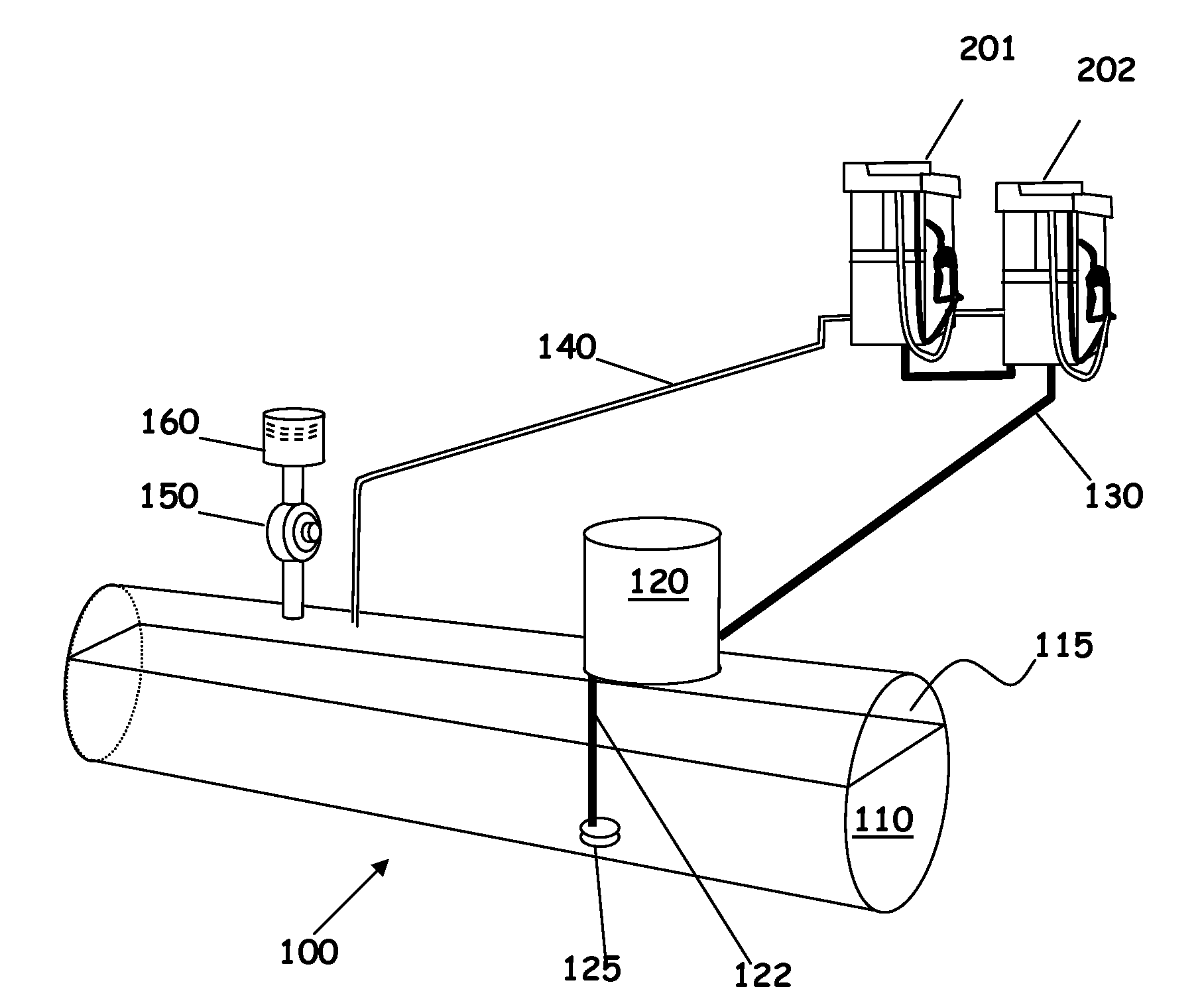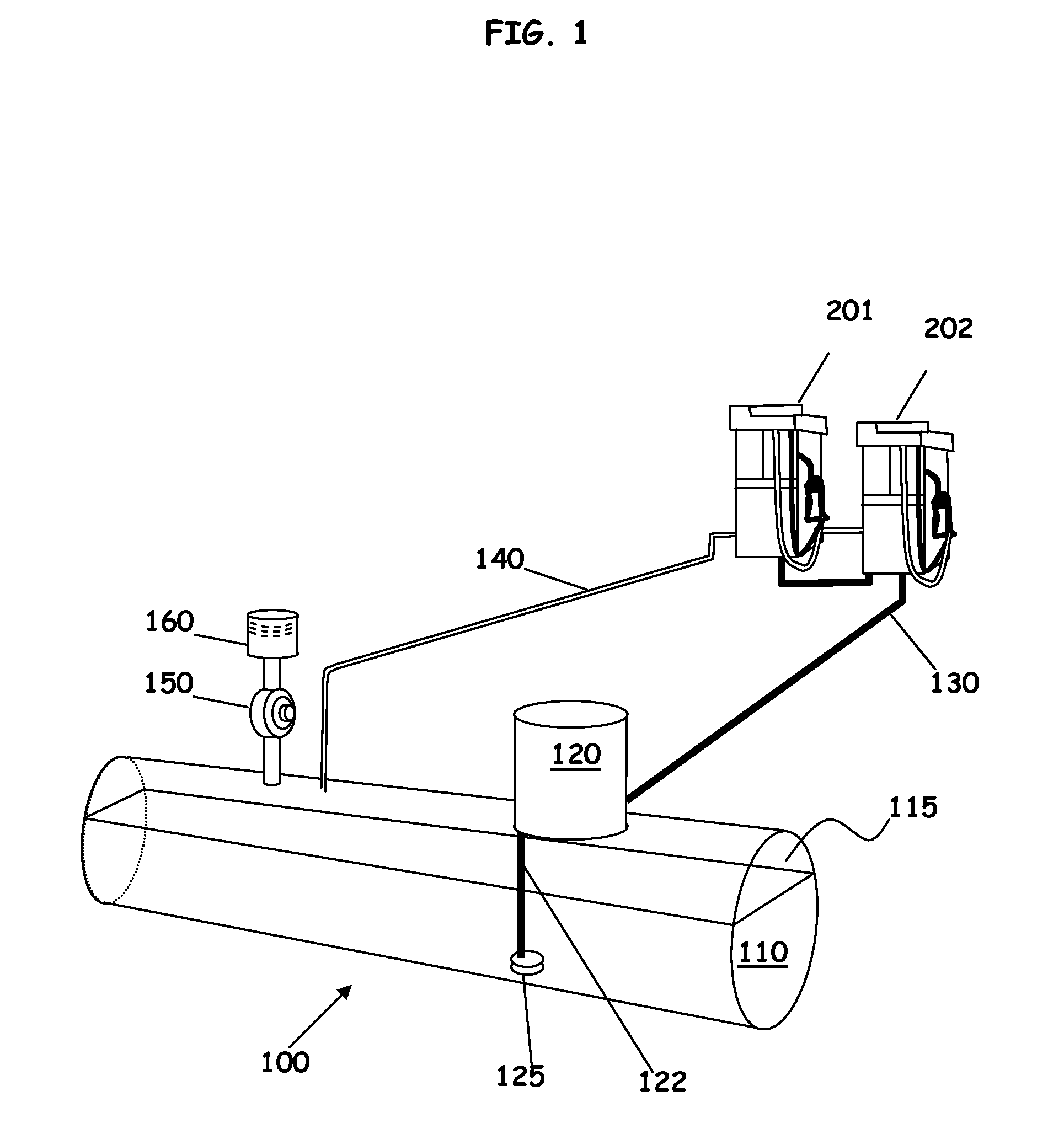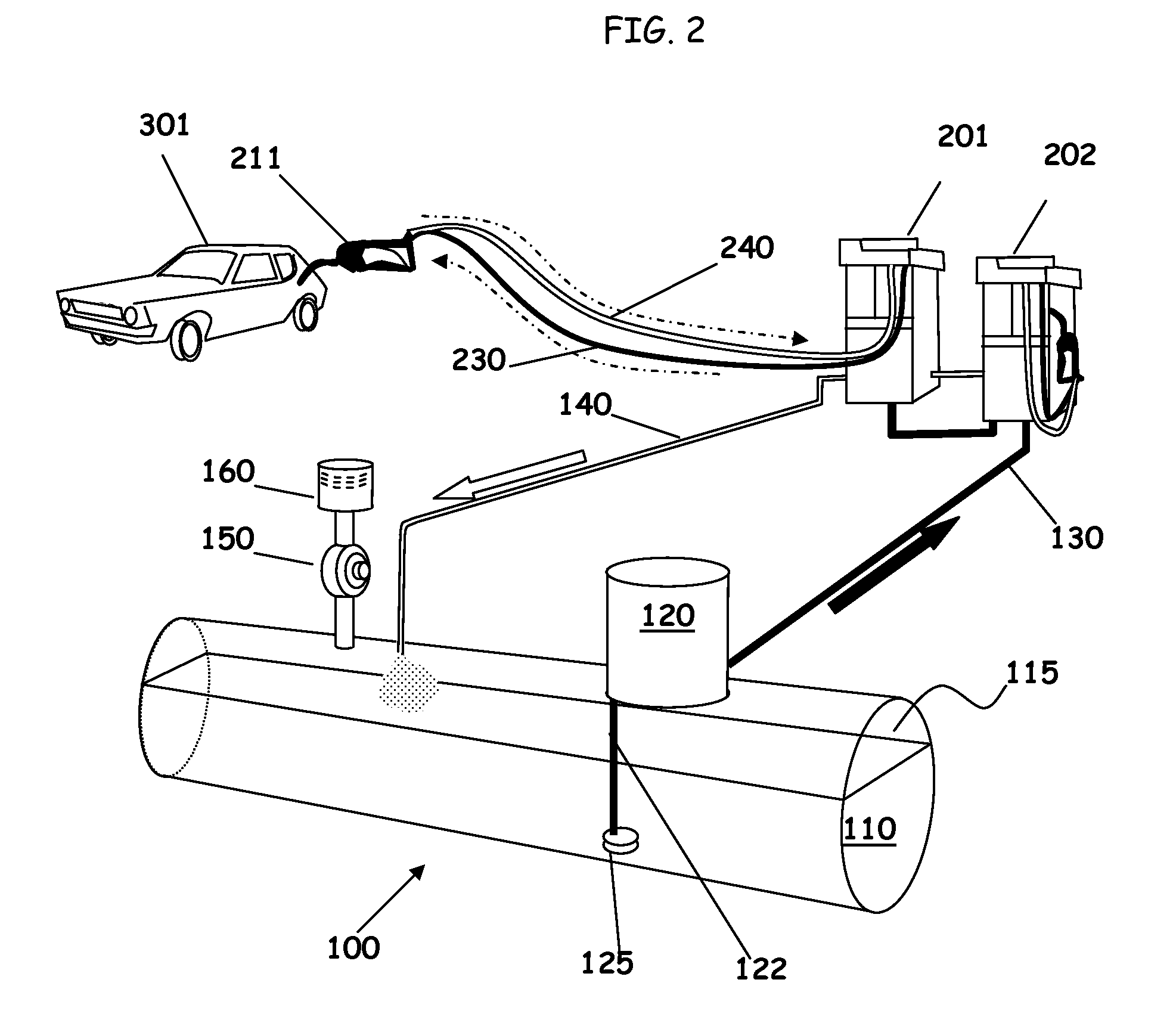Control of vapor emissions from gasoline stations
a technology of vapor emission and gasoline station, which is applied in the direction of filtration separation, packaging goods type, separation process, etc., can solve the problems of increasing maintenance burden, consuming additional energy for operation, and troublesome system, so as to improve vapor-liquid equilibrium and minimize vapor emission level
- Summary
- Abstract
- Description
- Claims
- Application Information
AI Technical Summary
Benefits of technology
Problems solved by technology
Method used
Image
Examples
Embodiment Construction
[0040]The present inventions now will be described more fully hereinafter, but not all embodiments of the invention are shown. Indeed, these inventions may be embodied in many different forms and should not be construed as limited to the embodiments set forth herein; rather, these embodiments are provided so that this disclosure will satisfy applicable legal requirements.
[0041]The balanced EVR system of the present invention includes at least one canister containing adsorbents to control hydrocarbon emissions from tank 100. FIG. 5 shows a cross section of a canister 400 comprises a metal or plastic housing containing an adsorbent. The design is an example and not meant to be limiting. Here the canister 400 is cylindrical, with longitudinal wall 410, a first end 420 (here the bottom and inlet end for purposes of discussion) with inlet port 422, and a second end 425 (here the top and outlet end) with outlet port 427. Canister 400 may have a volume of 4-20 gallons or larger. Additional...
PUM
| Property | Measurement | Unit |
|---|---|---|
| density | aaaaa | aaaaa |
| density | aaaaa | aaaaa |
| density | aaaaa | aaaaa |
Abstract
Description
Claims
Application Information
 Login to View More
Login to View More - R&D
- Intellectual Property
- Life Sciences
- Materials
- Tech Scout
- Unparalleled Data Quality
- Higher Quality Content
- 60% Fewer Hallucinations
Browse by: Latest US Patents, China's latest patents, Technical Efficacy Thesaurus, Application Domain, Technology Topic, Popular Technical Reports.
© 2025 PatSnap. All rights reserved.Legal|Privacy policy|Modern Slavery Act Transparency Statement|Sitemap|About US| Contact US: help@patsnap.com



